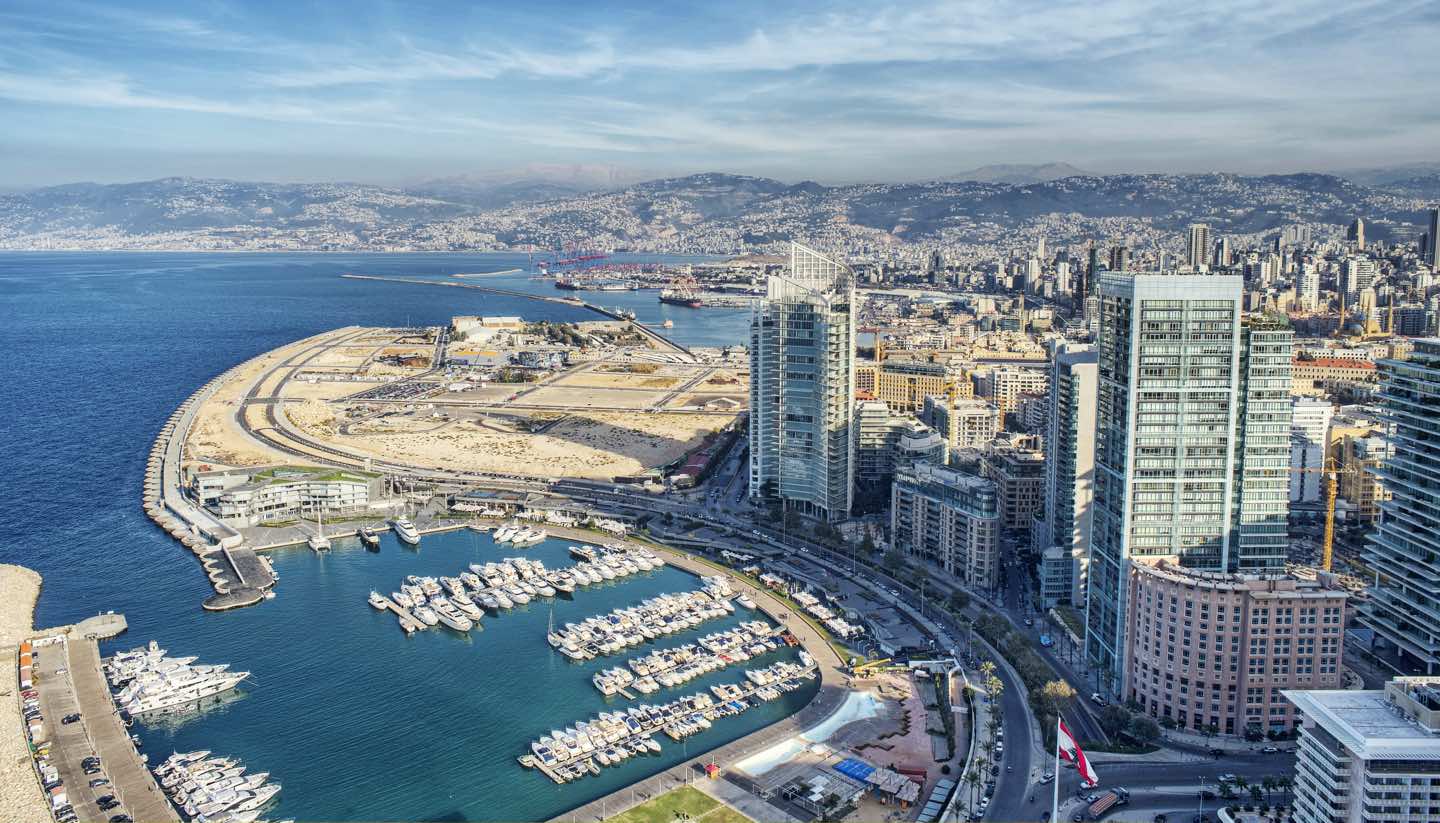Things to see in Beirut
Attractions
Beirut Corniche
Not so long ago, a saunter down the seaside promenade was the preserve of the hard-bitten war correspondent, but now Beirut's Corniche is one of the city's beauties. Along with spectacular views of the Mediterranean, the waterfront walk boasts glimpses of Mount Lebanon to the east and an eclectic array of architectural styles.
Address: , Corniche Beirut, Beirut,Telephone:
Opening times:
Daily 24 hours.
Website:Admission Fees:
No
Disabled Access: NoUNESCO: No
Roman baths
Once part of the Roman province of Phoenicia, Beirut is crammed with well-preserved Roman ruins. Among the most spectacular are the Roman baths, which were uncovered in 1968. The baths still have an intact hypocaust, as well as several empty pools. Even a few of the mighty limestone pillars and heavy pediments have made it into the 21st century.
Address: Downtown, Rue Riad El Solh, Beirut,Telephone: +961 4 410 001.
Opening times:
Daily 24 hours.
Website:Admission Fees:
No
Disabled Access: NoUNESCO: No
National Museum of Beirut
From Iron Age pendants to marble statues from the Roman Empire, Beirut's National Museum is home to an endless assortment of interesting artefacts. Its vast collection of Phoenician relics will keep you busy for hours. During the Lebanese Civil War, the museum straddled the demarcation line and was repeatedly shelled before being restored and reopening in 1999.
Address: , Rue de Damas, Beirut,Telephone: +961 1 426 703.
Opening times:
Tue-Sun 0900-1700.
Website: http://www.beirutnationalmuseum.comAdmission Fees:
No
Disabled Access: NoUNESCO: No
Place des Martyrs (Martyr’s Square)
This slightly shabby piazza marked the demarcation line during the Lebanese Civil War. It's home to a bullet-riddled bronze statue by Italian sculptor Renato Marino Mazzacurati, dedicated to the Lebanese who were hung by the Ottomans during WWI. The old French Opera House is also worthy of your attention. Check the local press to avoid any political demonstrations.
Address: Downtown, Place des Martyrs, Beirut,Telephone:
Opening times:
Daily 24 hours.
Website:Admission Fees:
No
Disabled Access: NoUNESCO: No
Al Omari Mosque
Originally a cathedral, and then a pagan temple, this building was converted into a Grand Mosque by invading Mamlukes in 1291. Its interior sandstone walls are decorated with fabulous Mamluk and Ottoman inscriptions, while a golden steel cage, a gift from Sultan Abdul Hamid II, encircles a shrine for John the Baptist. Check with the caretaker before entering.
Address: Downtown, Rue Waygand, Beirut,Telephone:
Opening times: Website:
Admission Fees:
No
Disabled Access: NoUNESCO: No
Raouche (Pigeon Rocks)
This huge Jurassic rock arch teeters precariously in the seas just off the Corniche and is where Beirut's teenagers go for assignations. While the Corniche is the best place to see Beirut's only natural feature, there is a steep track leading down to the arch, which is best attempted in flat shoes.
Address: , Raouché Corniche, Beirut,Telephone:
Opening times:
Daily 24 hours.
Website:Admission Fees:
No
Disabled Access: NoUNESCO: No
Grand Serail
Built in 1882, this stunning Ottoman-era building is the headquarters of the Lebanese Prime Minister. It's one of three historic Ottoman relics on the Serail hill, alongside the Council for Development and Reconstruction and the Hamidiyyeh clock tower. Like many Beirut buildings, it was damaged during the war but has now been restored to its former grandeur.
Address: Majidiye, , Beirut,Telephone:
Opening times: Website:
Admission Fees:
No
Disabled Access: NoUNESCO: No
St George's Orthodox Cathedral of Beirut
Beirut's oldest church holds a special place in Lebanese hearts for its central location and its importance as the Thronos (seat) of the Metropolitan of Beirut (equivalent to archbishop). The current incarnation was built in 1772, although like many Beiruti buildings, it required extensive restoration in the wake of the Lebanese Civil War.
Address: Downtown, Rue Emir Bechir, Beirut,Telephone: +961 1 980 920.
Opening times:
Mon 1400-2000, Tue 0900-2000, Weds 0730-2000, Thu 0900-2000, Sat 0900-2100, Sun 0730-1330 and 1500-2000.
Website:Admission Fees:
No
Disabled Access: NoUNESCO: No
Cilicia Museum
Beirut has long been a destination for refugees and the wonderful Cilicia Museum pays homage to the Armenian diaspora and their tragic plight. Most of the collection was smuggled out of Turkey in 1915 by monks from the Monastery of Sis in Cilicia, attempting to escape the genocide convulsing the region.
Address: , Rue Sawma Jaber, Beirut,Telephone: +961 4 410 001.
Opening times:
Tue-Sat 1000-1700, Sun 1000-1300.
Website: http://www.armenianorthodoxchurch.org/en/museumAdmission Fees:
No
Disabled Access: NoUNESCO: No
René Moawad Garden
Known locally as Sanayeh Gardens, Beirut's oldest public park first opened its gates in 1907. Expect smoothly paved paths filled with power walkers and children on tricycles, plus young Beirutis looking for relief. It's good for a bit of peace or a picnic, although it can get very busy over summer weekends.
Address: , Rue Spears, Beirut,Telephone:
Opening times:
Daily 0600-1800.
Website:Admission Fees:
No
Disabled Access: NoUNESCO: No
Tourist Offices
Ministry of Tourism
Address: Kantari, Rue Banque du Liban, Beirut,Telephone: +961 1 343 073.
Opening times:
Mon-Sat 0900-1400.
Website: http://www.mot.gov.lbThe Beirut Tourist Information Office is located on the ground floor of the Ministry of Tourism building. Here, visitors can find information about tours and public transportation maps.


